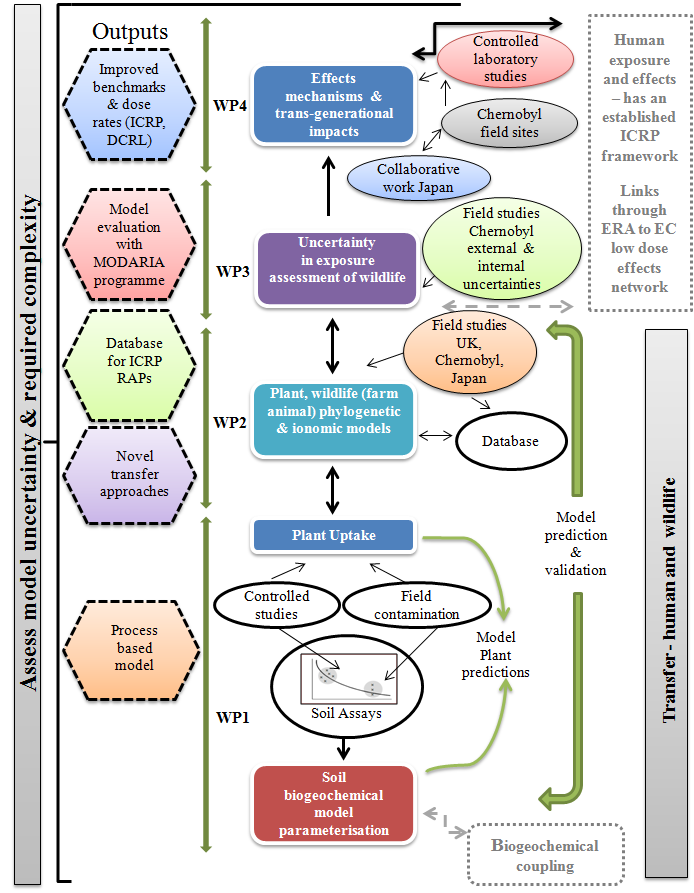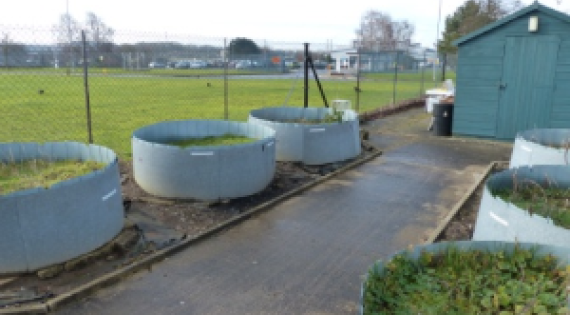
The TREE project: Inter-linkages and outputs


Biogeochemical processes and radionuclide behaviour in soil-plant systems
Objectives:
- Improve understanding of the biogeochemical behaviour of 129I, 79Se, 99Tc, & U isotopes in soils.
- Critically assess the validity of models parameterised from short-term laboratory experiments.
The first component of the study assessed how the availability of radionuclides varies in soils over time. TREE also investigated if short-term measurements can be used to predict the long-term availability of radionuclides in soils by testing our models in the Chornobyl exclusion zone (CEZ).
Image of soil lysimeters (Nick Beresford)
Novel approaches to estimate the radionuclide activity concentrations in the human foodchain & terrestrial and aquatic wildlife
Objective:
- To evaluate uncertainties in wildlife exposure estimation by assessing how animals utilise contaminated environments.
The second component applied the concepts of ‘phylogeny’ and ‘ionomics’ and statistical modelling methods to describe uptake of a range of radionuclide into wildlife and human foods. The approach made it possible to predict uptake for any plant or animal; this is of great value as it is impossible to measure uptake for all wildlife, crops and farm animals.
Exposure of wildlife under field conditions
Objective:
- To evaluate uncertainties in wildlife exposure estimation by assessing how animals utilise contaminated environments.
The third component aimed to improve the quantification of radiation exposure by investigating how animals within the CEZ interact with their environment and the consequences of this for their exposure to radiation.
Mechanisms of biological effect and trans-generational impacts of exposure to ionising radiation
Objective:
- Determine whether low level chronic exposure to radiation has significant effects on exposed populations in contaminated sites.
The final component investigated if knowledge from experiments on animals and plants in the laboratory is a good representation of what happens in the real world. A key element of this work was the consideration of transgenerational effects.
Capacity building
TREE established and trained a cohort of PDRAs and PhDs to help renew UK capacity in environmental radioactivity.
Our students were trained in a wide range of essential skills including controlled laboratory studies and working in contaminated environments. They benefited from being a member of a multidisciplinary team and opportunities to take placements with our beneficiaries and extensive range of project partners.
Chornobyl: Our Natural Laboratory
TREE studies in the Chornobyl Exclusion Zone. Listen to our Ukrainian colleague talking about his experiences of carrying out research in the CEZ.